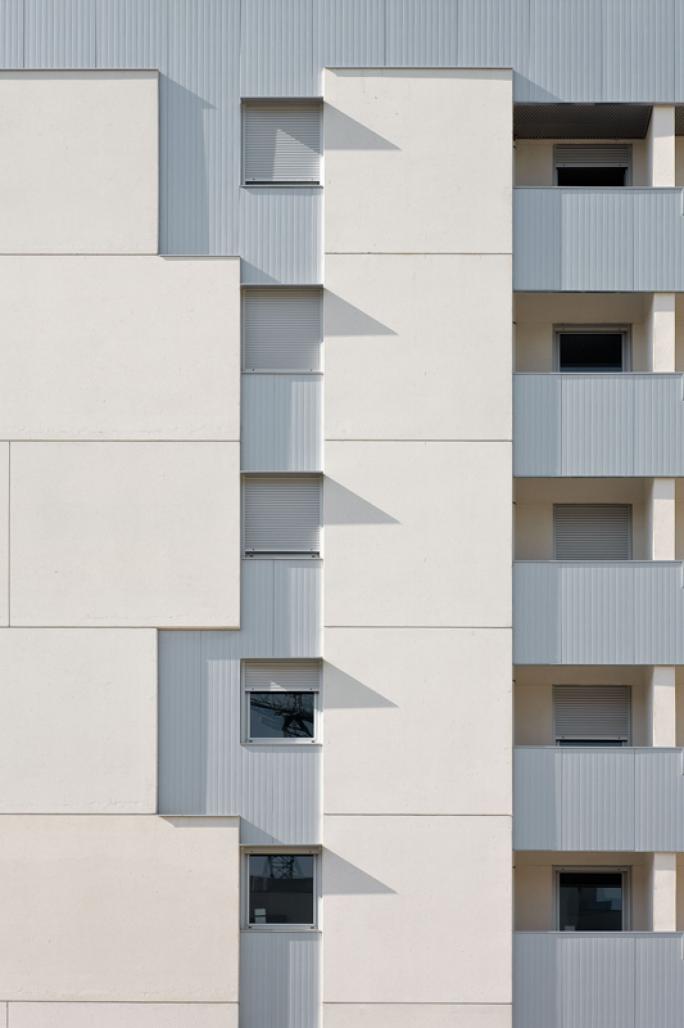The project to build 50 residential properties came about through a competition to construct on a series of lots designated for residential purposes in Sarriguren’s ECO-CITY, where particular importance was placed on environmental sustainability, functionality, the quality of materials, means of payment and economic viability. Our building proposal corresponds to a social cooperative interested in achieving the best properties ‘at the price of social housing’, the lowest within the residential property sector. The case being developed here is not a pilot scheme or experimental trial, but rather a real market example, transferable to other residential developments.
The technological strategy proposed was based on the following criteria: the achievement of optimum functionality ratios, the use of technologies and materials with high qualitative recognition by users without renouncing the compositional and aesthetic values maintained by AH, adaptation to the viability plan of the operation and, therefore, the habitual standards in Social Housing through the ongoing analysis of the cost of building and the incorporation of technologies which afford greater eco-efficiency (sustainability) without increasing the costs, or if the cost can be compensated by reductions achieved through the use of complementary building elements.
The strategy can be summarised as A3+R3, in other words: AMPLE, ATTRACTIVE, AFFORDABLE + REDUCE, REUSE, RECYCLE.
To choose the incorporable technologies, AH drew on its extensive experience in the construction of collective housing and the use of innovative systems applied to the construction of industrial architecture. The study of different bioclimatic solutions provided in other buildings in Sarriguren undoubtedly provided us with interesting data about the levels of eco-efficiency achieved and the suitability of the strategies used. A complete analysis, necessary to define strategies, required the availability of reliable economic data.
The result of the operation was profitable for all the agents involved even when modifications were introduced that implied changes in working habits and the use of diverse building systems. The willingness of the people assigned to this project made a decisive contribution to this result, people who, without any additional means or incentives, accepted with enthusiasm the little challenges posed by the changes made. The project - developed by PLAZAOLA Gestión Integral for the ARGI cooperative, built by DRAGADOS and created and managed by AH Asociados - has taken a few steps further along the path towards total eco-efficiency applied to ‘real’ low-cost protected housing.
2005
2008
Authors: Miguel A. Alonso del Val, Rufino J. Hernández Minguillón. Collaborators: Marcos Escartín, Patricia Biain, Naiara Fernández, Hugo Olaizola, Fernando Ostropolsky, Eduardo Ozcoidi, Carlos Arcalá. Technical Architects: Michel Aldaz García-Mina, Susana Ruiz de Galarreta Díaz de Cerio, José Luis Mendívil Ochoa, Miriam Arana Azpeitia. Engineering: GE & Asociados. Developer: Plazaola Gestión Integral, S.L. Constructor: Dragados. Project Date: Agosto de 2005. Completion Date: Abril de 2008. Built Surface: 6,484.40 m2 (sobre rasante; viviendas + local comercial); 3,236.29 m2 (bajo rasante; garaje). Photographer: José Manuel Cutillas – Proyectar.




